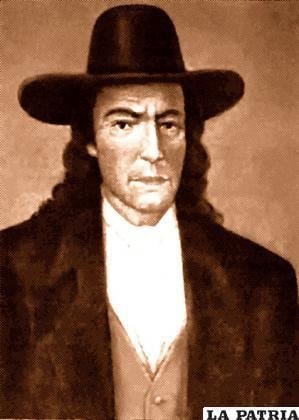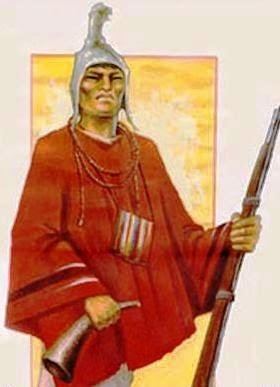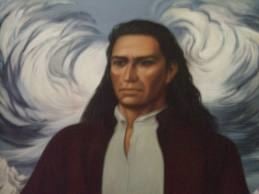Name Tomas Katari | ||
 | ||
Similar Gregoria Apaza, Bartolina Sisa, Túpac Katari | ||
Levantamiento de tom s katari
Tomás Katari or Catari (died January 15, 1781) was a Quechua chief who, in claiming indigenous rights, led a popular uprising in Upper Peru (present-day Bolivia) in the 18th century.
Contents
- Levantamiento de tom s katari
- Tom s katari
- Events leading up to Chayanta rebellion
- The Catari rebellion
- References
Tom s katari
Events leading up to Chayanta rebellion

During the 1770s, the economic and political stability of the Macha community in Upper Peru was continuously disrupted. In 1772, the alcabala (sales tax) was increased from 2 percent to 4 percent. Then in 1774, aduanas (customhouses) were established and the acabala was applied to grain. The acabala was again increased in 1776 to 6 percent and Upper Peru became part of the new viceroyalty of Rio de la Plata. During this economic turmoil, relations between the Indian communities and Spanish colonial officials underwent tension and strain as well.
The Catari rebellion

In 1778, Tomás Catari went to Buenos Aires seeking justice for his people. He envisioned a utopic form of self-government for the Macha community and opposed a violent revolution. During this same year, the Crown furthers tensions by ordering corregidores to collect the 6 percent alcabala.

In 1779, Tomás Catari is arrested, and the rebellion begins in late August 1780. The Macha community congregated in La Plata demanding that Catari be named cacique. He is imprisoned again but shortly after freed and officially named cacique. During Catari's brief rule of the indigenous community, he sought to change relations between indigenous communities and the colonial state pacifically. The ensuing violence demonstrates some of the limitations of Catari's power.

In December 1780, Catari was captured by a local miner, Alvares, on orders from the justicia mayor Juan Antonio Acuña. Peasant followers pursued Catari’s captors. Resultingly, Catari was executed at the hands of royalist forces as he was being taken to La Plata. When the rebel forces witnessed the executed they retaliated by killing the justicia mayor (leaving his body unburied and piercing Acuña’s eyes), five other soldiers and eventually Alvares as well.

Contrary to Catari’s vision, after his death the uprising lost any semblance of reformist experiment against bad authorities and became a struggle between Indians and colonial officials. Tomás’s cousins, Nicolás and Dámaso Catari, then took over leadership, expanding the rebellion to other communities in Upper Peru, and expressed desire to link with Tupac Amaru’s uprising. The rebels targeted the Spanish and creole, regardless of individual affiliations. Damaso and Nicolas were gruesomely executed in La Plata and the cause was then taken up by Julián Apasa, under the name of Túpac Katari.
Legacy Katari's rebellion could be seen as a stark contrast too that of fellow Native American leader Tupac Amaru, since his way of action was closer to the traditional way of action of the Native Americans of using Spanish methods and institutions to achieve his objectives instead of trying to overrun the system. Due to this method of action his image has not been as used as that of Tupac Amaru by Indian or Latin American nationalist movements
